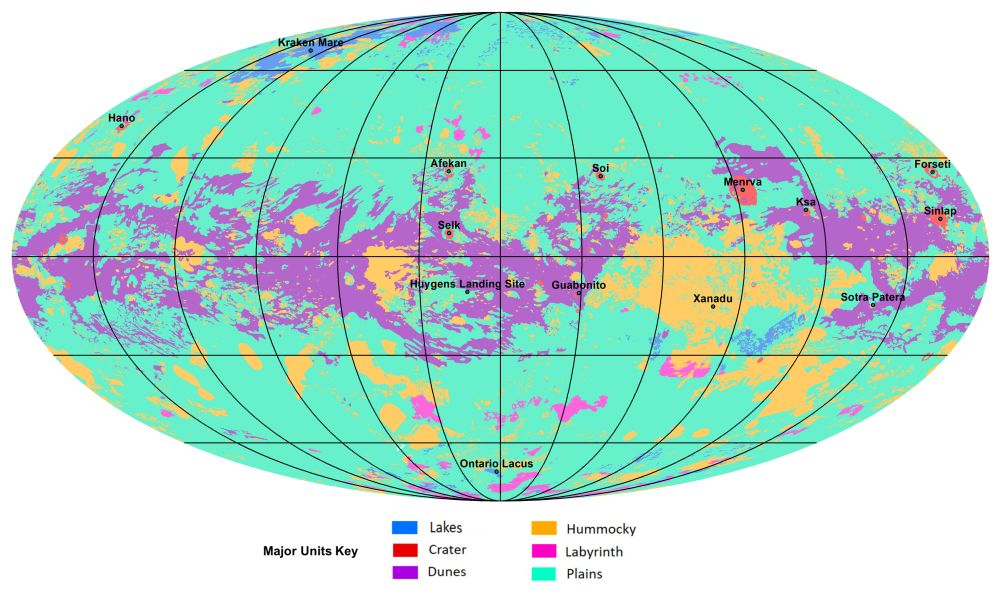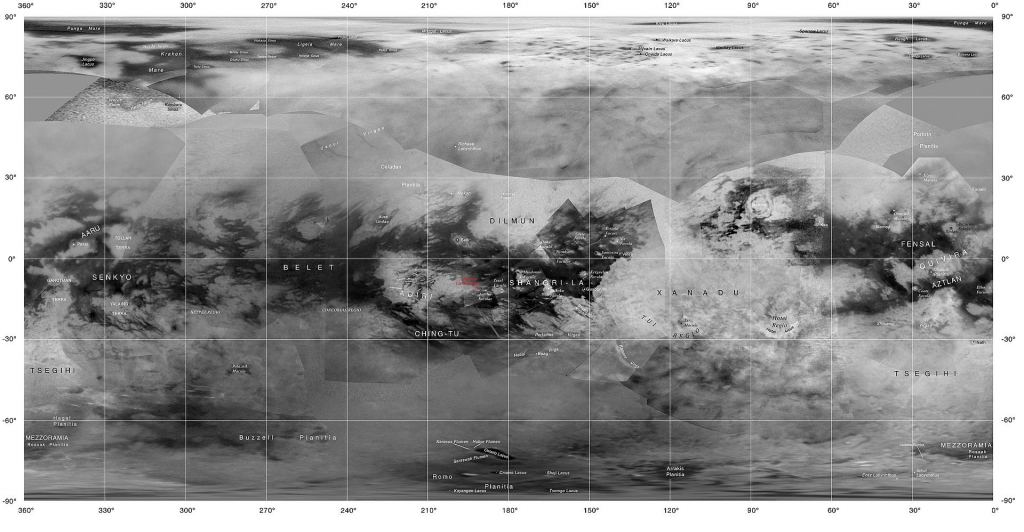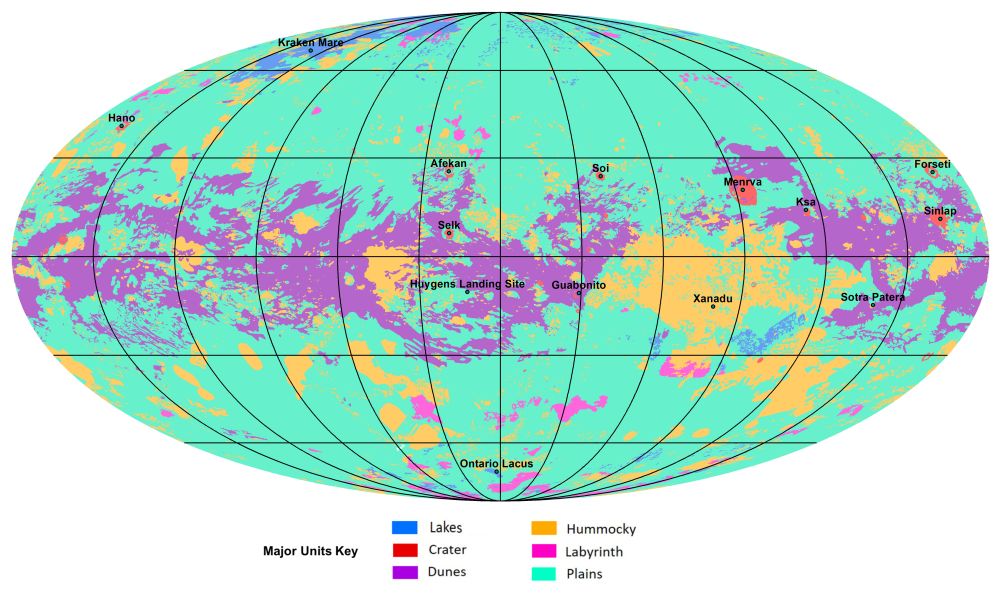Titan’s methane-based hydrologic cycle makes it one of the Solar System’s most geologically diverse bodies. There are lakes of methane, methane rainfall, and even “snow” made of complex organic molecules. But all of that detail is hidden under the moon’s dense, hazy atmosphere.
Now a team of scientists have used data from the Cassini mission to create our first global geological map of Titan.
The map is based on radar, visible, and infrared images from the Cassini mission. The Cassini mission ended in September 2017 when it was directed to crash into Saturn. But even after two years, scientists are still going through Cassini’s data and producing studies like this one.
This new study is titled “A global geomorphologic map of Saturn’s moon Titan.” It’s published in the November 18th issue of Nature. Lead author of the study is Rosaly Lopes, a planetary geologist at NASA’s Jet Propulsion Laboratory.
“Titan has an active methane-based hydrologic cycle that has shaped a complex geologic landscape, making its surface one of most geologically diverse in the solar system,” Lopes said in a press release. When you compare Titan’s surface with some of the grey, impact-blasted surfaces common in the Solar System, you can see why.
“Despite the different materials, temperatures and gravity fields between Earth and Titan, many surface features are similar between the two worlds and can be interpreted as being products of the same geologic processes,” said Lopes. “The map shows that the different geologic terrains have a clear distribution with latitude, globally, and that some terrains cover far more area than others.”

The black lines on the map are 30 degrees longitude and latitude, and some prominent locations are labelled, including Kraken Mare and the landing site of the Huygens probe. The dominant geography is plains, pictured in green. Dune features are also prominent. Blue lakes are visible in the northern hemisphere.
Other geological units include labyrinth (tectonically disrupted regions often containing fluvial channels), and hummocky (hilly, with some mountains.)
The map is a Mollweide projection, which creates accurate proportions, but less accurate shapes. Mollweide projections are often used to map global distributions. This map is centered on 0 degrees latitude and 180 degrees longitude, and the scale is 1:20,000,000.
Their work is more than just the map though. They’ve also given ages to the different geological units. The authors say that the dunes and lakes are relatively young features, while the hummocky terrain is the oldest on the moon.
In their paper, the authors say that there’s a clear latitudinal variation in Titan’s geology. “Our results also show that Titan’s surface is dominated by sedimentary or depositional processes with a clear latitudinal variation, with dunes at the equator, plains at mid-latitudes and labyrinth terrains and lakes at the poles.”
The team relied heavily on Cassini’s radar imaging system, which had the power to penetrate the thick nitrogen-rich atmosphere. They also used images from the spacecraft’s visible and infrared instruments, which were able to get images of Titan’s larger surface features. All these images were taken during Cassini’s more than 120 flybys of Titan.

“This study is an example of using combined datasets and instruments,” Lopes said. “Although we did not have global coverage with synthetic aperture radar [SAR], we used data from other instruments and other modes from radar to correlate characteristics of the different terrain units so we could infer what the terrains are even in areas where we don’t have SAR coverage.”
Planetary geologist David Williams of the School of Earth and Space Exploration at Arizona State University was also part of the study. Williams has previous experience with the Magellan Venus orbiter, and on a previous regional geological map of Titan. He helped identify which geological features on Titan could be determined from radar, and then extrapolated from there to the regions that weren’t covered by radar.
“The Cassini mission revealed that Titan is a geologically active world, where hydrocarbons like methane and ethane take the role that water has on Earth,” Williams said. “These hydrocarbons rain down on the surface, flow in streams and rivers, accumulate in lakes and seas, and evaporate into the atmosphere. It’s quite an astounding world!”
Titan is an intriguing world, and some suspect it may be capable of supporting life because of the presence of liquid on its surface. That may be far-fetched, or it may not. Regardless, it’s still a fascinating and scientifically interesting world.

NASA has announced their Dragonfly mission to study Titan more closely, especially its chemistry and potential habitability. Dragonfly will be a small rotary-winged robotic aircraft able to fly to dozens of promising locations on Titan, where it can look for prebiotic chemical processes common on both Titan and Earth.
Dragonfly is planned to launch in 2026 and won’t get to Titan until 2034.

